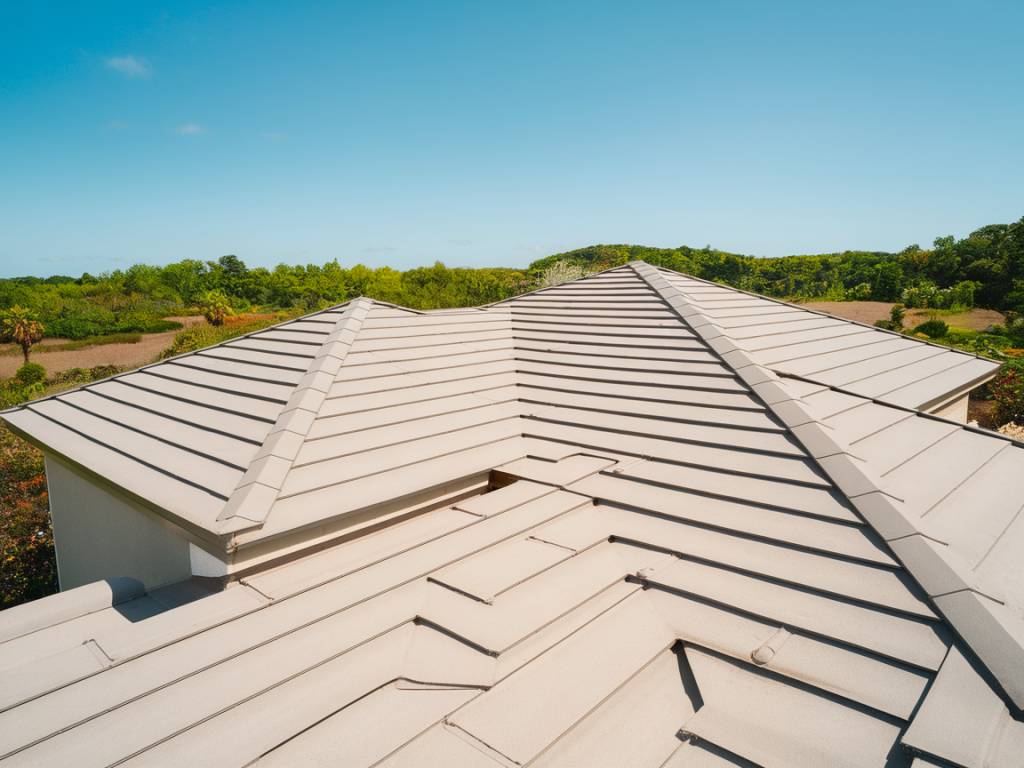
What Is Cool Roofing and Why Should You Care?
Picture this: it’s the middle of summer, the sun is blazing, and your home feels like a sauna despite your air conditioning working overtime. Sound familiar? If so, you might be missing out on one of the most energy-efficient, cost-saving technologies in home design—cool roofing.
A cool roof is exactly what it sounds like: a roof that reflects more sunlight and absorbs less heat than a traditional one. These roofs are made with special materials and coatings designed to keep your home cooler, reduce energy consumption, and even extend the lifespan of your roof. But how does it all work, and why should it matter to you?
How Cool Roofing Works: Science Made Simple
At its core, cool roofing is all about reflectivity and emissivity. Traditional roofs tend to absorb the sun’s rays, which means heat builds up and finds its way into your living spaces. This is especially true for darker roofing materials, which can reach temperatures of up to 150°F (65°C) or more on a hot day.
Cool roofs, on the other hand, are designed to reflect a larger percentage of solar radiation. Many are coated with reflective paint or made from materials like white thermoplastic membranes, metal roofing, or even clay tiles, depending on the style and functionality you’re after.
Beyond reflectivity, cool roofs are also skilled at shedding the heat they do absorb. This means lower energy costs, better temperature control, and a more comfortable home environment—what’s not to love?
The Benefits of Cool Roofing for Energy-Efficient Homes
So, why make the switch to a cool roof? Here are some compelling reasons:
Lower Energy Bills
One of the most immediate and noticeable perks of cool roofing is a reduction in your energy bill. By reflecting sunlight and reducing heat absorption, your home naturally stays cooler. This means your air conditioning system doesn’t have to work as hard—or as often—to keep your indoor spaces comfortable. Expect to see savings, especially during the warmer months.
Eco-Friendly and Sustainable
Looking to reduce your carbon footprint? A cool roof can help. By lowering your home’s energy consumption, you directly decrease the demand on power plants, many of which burn fossil fuels to generate electricity. This means fewer greenhouse gas emissions—something the planet will thank you for.
Extended Roof Lifespan
If you’ve ever seen a sun-bleached, cracked roof, you know that intense heat isn’t exactly a friend to roofing materials. Cool roofs can last longer because they endure less thermal stress, meaning less need for repairs or replacements in the long run. Think of it as an investment in your property’s durability.
Improved Indoor Comfort
Who doesn’t love a cozy home? Cool roofing makes it easier to maintain reasonable indoor temperatures, particularly in spaces that aren’t climate-controlled, like attics and garages. Say goodbye to feeling like you’re melting every time you climb into the attic to grab something.
Eligibility for Rebates and incentives
Depending on where you live, installing a cool roof could qualify you for tax credits, rebates, or other incentives. Governments and utility companies often reward homeowners who make energy-efficient upgrades, so it’s worth looking into the programs available in your area.
Is a Cool Roof Right for Your Home?
This all sounds fantastic, but here’s the catch—not every home is a perfect candidate for a cool roof. Several factors come into play when deciding if cool roofing is the right fit.
If you live in an area with a hot climate and lots of sunlight, a cool roof could be a game-changer for your energy costs and comfort. Think places like southwestern Europe or sunnier regions of the US—the savings will be more noticeable here. However, if you reside in a colder climate, the benefits might be less dramatic, since you’ll naturally spend more on heating than cooling throughout the year.
Additionally, consider your home’s design. If you have a flat or low-sloped roof, the installation of cool roofing materials is generally easier. For steep-sloped roofs, more planning may be required, including selecting a material that matches your home’s aesthetic without compromising functionality.
What Are the Best Materials for Cool Roofing?
Not all cool roofs are created equal! Here’s a breakdown of some popular materials:
- Cool Roof Coatings: These are a budget-friendly solution and can be applied to existing roofs. They range from reflective paints to elastomeric coatings, which offer both UV resistance and weatherproofing.
- Metal Roofing: Highly durable and naturally reflective, metal roofing is an excellent choice for both modern and traditional homes. Bonus: it’s often made from recycled materials!
- Tile Roofing: Whether it’s clay or concrete, tiles are naturally good at keeping heat out. Opt for lighter-colored tiles to boost reflectivity.
- Single-Ply Membranes: Common for commercial buildings but also increasingly popular for residential use, these are made from materials like PVC or TPO, which are naturally reflective and cost-effective.
How to Make the Switch
If you’re ready to take the plunge, installing a cool roof doesn’t have to be a daunting task, especially if you’re updating an older home. Here’s how to start:
- Consult a professional roofing contractor to evaluate your home and recommend the best materials for your climate and structure.
- Determine whether you’ll install a new roof or apply a cool roof coating to an existing one.
- Research local incentives and rebates for energy-efficient home upgrades—you might be surprised at just how much you can save.
It’s a relatively simple upgrade with benefits that can last for decades.
Final Thoughts
Switching to a cool roof is a practical, environmentally friendly way to enhance your home’s energy efficiency while keeping things stylish and functional. Whether you’re building a new house or looking to upgrade an existing one, there’s no shortage of materials, styles, and options to suit your budget and personal aesthetic.
So, what do you think? Is it time to give your roof a cool makeover? Not only will your energy bills thank you, but your home—and the planet—will too.


